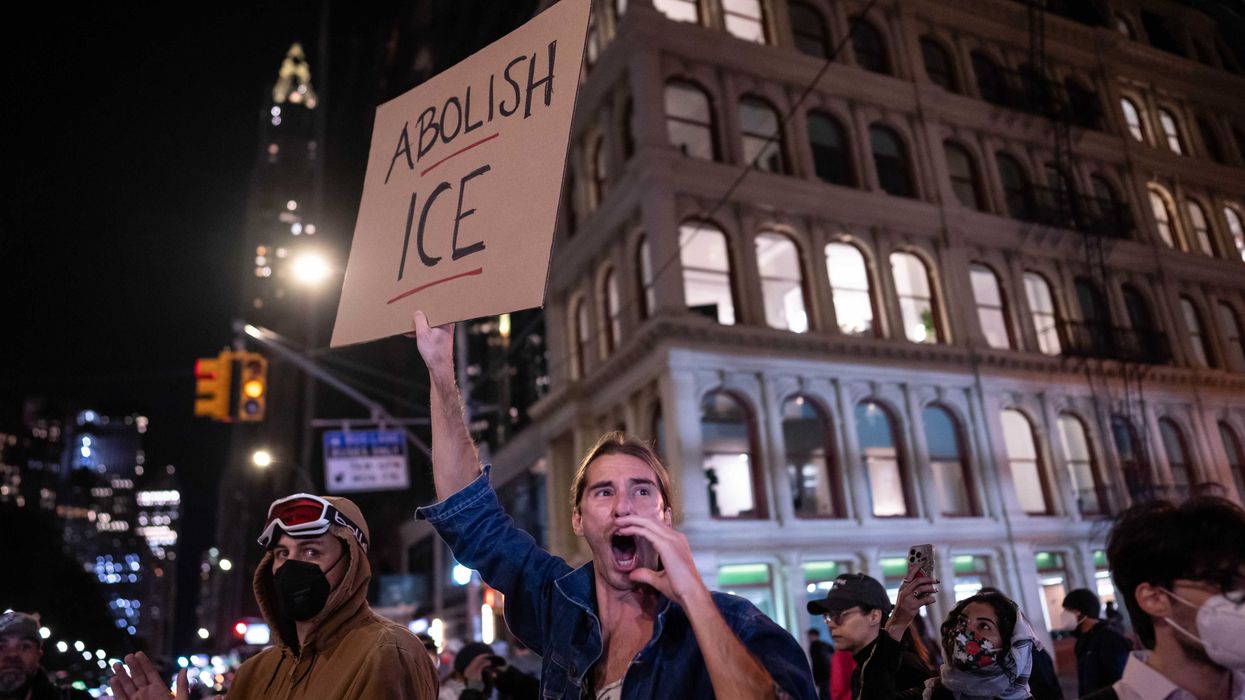From the moment the 33-year-old Thomas Jefferson arrived at the Continental Congress in Philadelphia in 1776, he was on the radical side. That caused John Adams to like him immediately. Then the Congress stuck Jefferson and Adams together on the five-man committee to write a formal statement justifying a break with Great Britain, and their mutual admiration society began.
Jefferson thought Adams should write the Declaration. But Adams protested, saying, “It can't come from me because I'm obnoxious and disliked." Adams reasoned that Jefferson was not obnoxious or disliked, therefore he should write it. Plus, he flattered Jefferson, by telling him he was a great writer. It was a master class in passing the buck.
So, over the next 17 days, Jefferson holed up in his room, applying his lawyer skills to the ideas of the Enlightenment. He borrowed freely from existing documents like the Virginia Declaration of Rights. He later wrote that “he was not striving for originality of principle or sentiment." Instead, he hoped his words served as “an expression of the American mind."
It's safe to say he achieved his goal.
The five-man committee changed about 25 percent of Jefferson's first draft of the Declaration before submitting it to Congress. Then, Congress altered about one-fifth of that draft. But most of the final Declaration's words are Jefferson's, including the most famous passage — the Preamble — which Congress left intact. The result is nothing less than America's mission statement, the words that ultimately bind the nation together. And words that we desperately need to rediscover because of our boiling partisan rage.
The Declaration is brilliant in structure and purpose. It was designed for multiple audiences: the King of Great Britain, the colonists, and the world. And it was designed for multiple purposes: rallying the troops, gaining foreign allies, and announcing the creation of a new country.
The Declaration is structured in five sections: the Introduction, Preamble, the Body composed of two parts, and the Conclusion. It's basically the most genius breakup letter ever written.
In the Introduction, step 1 is the notification — I think we need to break up. And to be fair, I feel I owe you an explanation...
When in the Course of human events, it becomes necessary for one people to dissolve the political bands which have connected them with another…
The Continental Congress felt they were entitled by “the Laws of Nature and of Nature's God" to “dissolve the political bands," but they needed to prove the legitimacy of their cause. They were defying the world's most powerful nation and needed to motivate foreign allies to join the effort. So, they set their struggle within the entire “Course of human events." They're saying, this is no petty political spat — this is a major event in world history.
Step 2 is declaring what you believe in, your standards — Here's what I'm looking for in a healthy relationship...
This is the most famous part of the Declaration; the part school children recite — the Preamble:
We hold these truths to be self-evident, that all men are created equal, that they are endowed by their Creator with certain unalienable Rights, that among these are Life, Liberty and the pursuit of Happiness.
That's as much as many Americans know of the Declaration. But the Preamble is the DNA of our nation, and it really needs to be taken as a whole:
That to secure these rights, Governments are instituted among Men, deriving their just powers from the consent of the governed, That whenever any Form of Government becomes destructive of these ends, it is the Right of the People to alter or to abolish it, and to institute new Government, laying its foundation on such principles and organizing its powers in such form, as to them shall seem most likely to effect their Safety and Happiness.
The Preamble takes us through a logical progression: All men are created equal; God gives all humans certain inherent rights that cannot be denied; these include the rights to life, liberty, and the pursuit of happiness; to protect those rights, we have governments set up; but when a government fails to protect our inherent rights, people have the right to change or replace it.
Government is only there to protect the rights of mankind. They don't have any power unless we give it to them. That was an extraordinarily radical concept then and we're drifting away from it now.
The Preamble is the justification for revolution. But note how they don't mention Great Britain yet. And again, note how they frame it within a universal context. These are fundamental principles, not just squabbling between neighbors. These are the principles that make the Declaration just as relevant today. It's not just a dusty parchment that applied in 1776.
Step 3 is laying out your case — Here's why things didn't work out between us. It's not me, it's you...
This is Part 1 of the Body of the Declaration. It's the section where Jefferson gets to flex his lawyer muscles by listing 27 grievances against the British crown. This is the specific proof of their right to rebellion:
He has obstructed the administration of justice...
For imposing taxes on us without our consent...
For suspending our own legislatures...
For quartering large bodies of armed troops among us...
Again, Congress presented these “causes which impel them to separation" in universal terms to appeal to an international audience. It's like they were saying, by joining our fight you'll be joining mankind's overall fight against tyranny.
Step 4 is demonstrating the actions you took — I really tried to make this relationship work, and here's how...
This is Part 2 of the Body. It explains how the colonists attempted to plead their case directly to the British people, only to have the door slammed in their face:
In every stage of these Oppressions We have Petitioned for Redress in the most humble terms: Our repeated Petitions have been answered only by repeated injury...
They too have been deaf to the voice of justice... We must, therefore... hold them, as we hold the rest of mankind, Enemies in War, in Peace Friends.
This basically wrapped up America's argument for independence — we haven't been treated justly, we tried to talk to you about it, but since you refuse to listen and things are only getting worse, we're done here.
Step 5 is stating your intent — So, I think it's best if we go our separate ways. And my decision is final...
This is the powerful Conclusion. If people know any part of the Declaration besides the Preamble, this is it:
...that all political connection between them and the State of Great Britain, is and ought to be totally dissolved...
They left no room for doubt. The relationship was over, and America was going to reboot, on its own, with all the rights of an independent nation.
And for the support of this Declaration, with a firm reliance on the protection of divine Providence, we mutually pledge to each other our Lives, our Fortunes and our sacred Honor.
The message was clear — this was no pitchfork mob. These were serious men who had carefully thought through the issues before taking action. They were putting everything on the line for this cause.
The Declaration of Independence is a landmark in the history of democracy because it was the first formal statement of a people announcing their right to choose their own government. That seems so obvious to us now, but in 1776 it was radical and unprecedented.
In 1825, Jefferson wrote that the purpose of the Declaration was “not to find out new principles, or new arguments, never before thought of… but to place before mankind the common sense of the subject, in terms so plain and firm… to justify ourselves in the independent stand we are compelled to take."
You're not going to do better than the Declaration of Independence. Sure, it worked as a means of breaking away from Great Britain, but its genius is that its principles of equality, inherent rights, and self-government work for all time — as long as we actually know and pursue those principles.

 AASHISH KIPHAYET / Contributor | Getty Images
AASHISH KIPHAYET / Contributor | Getty Images
 Harold M. Lambert / Contributor | Getty Images
Harold M. Lambert / Contributor | Getty Images Adam Gray / Stringer | Getty Images
Adam Gray / Stringer | Getty Images Anadolu / Contributor | Getty Images
Anadolu / Contributor | Getty Images